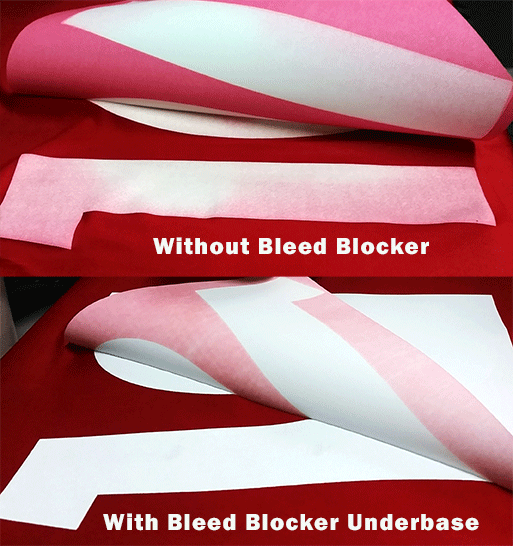
Here is another tip from Chris Pluck that was published in Printwear:
In recent years, the use of synthetic manufactured clothing has increased. Whether it’s full-on athletic wear, outdoor gear, or the athleisure market, most areas of wearable apparel now require a printing ink medium that can withstand the potential of highly dyed or sublimated printed fabrics from penetrating into the inks which will immediately, or over time migrate into the printed image, and in doing so can change the ink’s original color.
Reducing the dye/color migration commonly found in fabrics containing polyester is a challenge for printers when choosing an application method. Polyester is more likely to bleed, while other fabrics like cotton and nylon are much less likely to contain dyes with bleed-migration properties.
Although a thicker white ink deposit can be applied to garment to control over a short time fabric dye migration, the likelihood of the fabric bleed is always a possibility over time. Also the temperatures and moisture encountered once the transfer has been applied to the garment can increase the potential of bleed migration as the moisture inherent in the garment can propel the dyes to fluctuate and evaporate which in turn can draw the fabric dye up into the ink.
If the fabric that will be used is made of polyester or a polyester blend and the garment is non white in color then a bleed blocking barrier should be used in the transfer so that the chance of dye migration is greatly reduced. This dye blocker addition to the transfer image finish will add another step in the transfer production method and in the transfer overall finish but in terms of providing a quality transfer that can withstand what ever the garment color can throw at it, is seen as well worth the addition.
